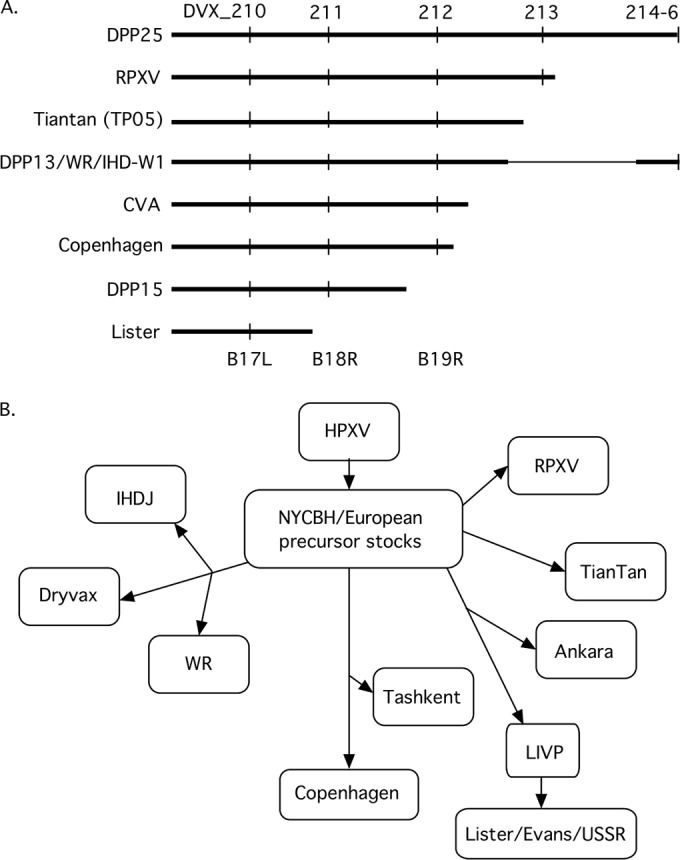FIG 9.

Model for VACV evolution. (A) Graphical depiction of the right genomic boundaries of VACVs. (B) Postulated historical relationships between different VACV strains. The analysis is based upon a combination of known historical relationships, conserved deletions, and right TIR boundaries. For example, Ankara and GLV-1h68 (a LIVP clone) share the same TIR boundary (where 28% of the N terminus of DVX_213 connects to DVX_019), suggesting that they might be derived from a common older stock. Tashkent also shares a 3.7-kbp deletion with Copenhagen along with three additional large deletions, one of them identical to a deletion in WR. However, since WR is derived from NYCBH, this leads us to assume that this particular deletion was also present in the old NYCBH/European precursor stocks before the NYCBH strain was transported from Europe in 1865 and isolated from Tashkent. This might account for its survival in WR and Tashkent, even though these two viruses share no known historical relationship. In contrast, one can find no shared, and yet still distinctive, features linking RPXV or TianTan to other particular VACV strains (see the text for additional discussion).
